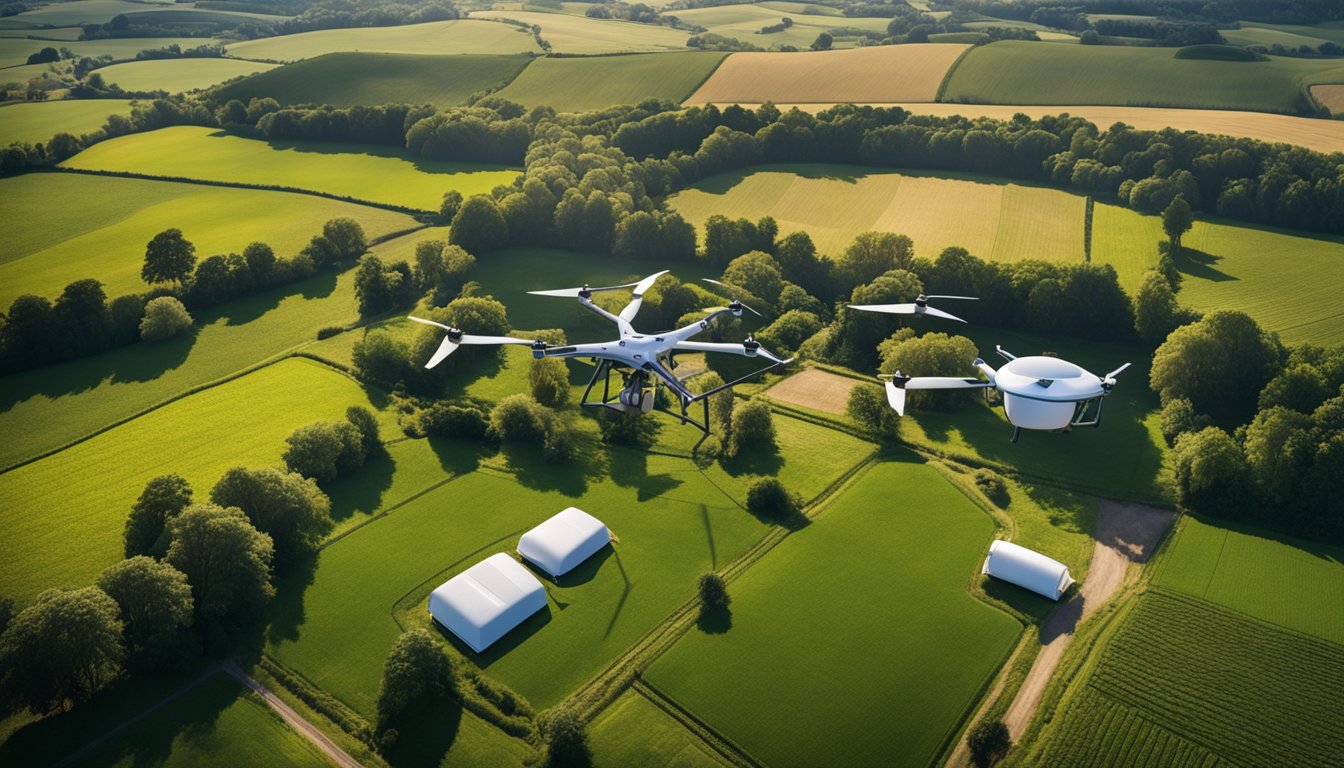Late updated: 23 Feb 2025 13:02
Written by: Oliver Bennett
AI Innovations Enhancing UK Rural Internet Connectivity: Transforming Digital Access
Artificial Intelligence is revolutionising rural connectivity in the UK, providing transformative benefits that reach far beyond mere access to the internet. In rural communities across the UK, AI innovations are addressing the digital divide by enhancing broadband infrastructure, enabling faster and more reliable connections. The impact of such technological advancements is profound, offering new opportunities for economic growth and sustainability.

As we explore these developments, it's clear that AI is not just enhancing connectivity; it is reshaping the very fabric of rural life. By improving network efficiency and accessibility, these innovations create an environment where economic activities can flourish. For many rural areas, this means a chance to engage more robustly with global markets and adopt smart technologies that improve efficiency across agriculture and other crucial sectors.
The ability to connect with specialists without unnecessary travel and the promise of high-speed access for every home and business are redefining what's possible in these regions. Rural communities now have the potential to thrive, bridging the gap that has long existed between urban and rural areas in terms of connectivity and opportunity.
Key Takeaways
- AI bolsters rural broadband, enhancing connectivity.
- Increased connectivity fosters economic growth in rural areas.
- Rural communities gain crucial access to global opportunities.
Extending Broadband in Rural Areas
Extending broadband in rural areas involves a combination of government initiatives, emerging technologies such as AI, and an understanding of challenges and opportunities that come with infrastructure development. The collaboration between various stakeholders is essential to improve digital inclusivity, economic growth and access to services in these regions.
Government Initiatives and Strategic Planning
Central to enhancing rural broadband is Project Gigabit, aimed at delivering gigabit-capable broadband to remote areas. The government's focus on strategic planning involves collaboration with local authorities and the Shared Rural Network, which targets improved mobile and internet access. Funding allocations and legislative support establish a framework for sustainable development. Authorities aim to close the digital gap, thus fostering economic and rural development.
Emerging Technologies and AI Applications
Technological advancements play a crucial role in expanding broadband access. AI-driven connectivity solutions facilitate efficient network operations, enhancing digital infrastructure. AI applications can optimise wireless networks, predicting demand and allocating resources effectively. Innovative technologies improve gigabit-capable broadband rollouts, providing a more resilient and adaptable network. As AI progresses, it holds the potential to revolutionise the scope of rural internet accessibility.
Challenges and Opportunities
Implementing broadband in rural areas faces several challenges, including geographical barriers and commercial viability. Resource allocation requires careful planning due to sparse populations and varied landscapes. Despite these hurdles, opportunities for economic development abound. Enhanced internet access supports rural businesses, boosts education, and improves healthcare services. Promoting universal service obligation guidelines drives long-term connectivity growth, bridging the rural-urban digital divide.
Impact on Agriculture and Rural Economies

AI innovations are transforming UK agriculture and rural economies by integrating advanced technologies into traditional practices. This integration enhances farm productivity and economic growth, while also improving the quality of life in rural communities.
Smart Technology in Farming
Smart technology, including IoT devices and precision farming tools, has become pivotal in enhancing agricultural productivity. Farmers now use digital twins and AI-driven analytics to simulate crop growth and predict yields under varying conditions. This precision in farming not only reduces waste but also optimises resource use, leading to increased profitability for farmers. The adoption of smart farming methods empowers small and medium enterprises (SMEs) in rural areas to remain competitive and sustainable.
Economic and Social Advancements
The enhancement of internet connectivity through AI has had a profound impact on rural economies. By improving broadband access, it facilitates economic growth and creates new job opportunities, especially in agritech. This digital transformation also enables the growth of rural SMEs, allowing them to expand their reach and increase profitability. As a result, rural communities become more vibrant and economically diverse. The integration of AI and technology into the agricultural sector reshapes the economic landscape, offering increased profitability and job opportunities.
Enhancing Public Services and Quality of Life
AI-driven improvements in connectivity go beyond agriculture, affecting various public services such as healthcare and education. Telemedicine services become readily accessible, improving healthcare outcomes for rural populations. Online learning platforms offer better educational opportunities, bridging gaps in traditional schooling methods. Enhanced connectivity ensures that public services are more efficient and accessible, fostering a higher quality of life. This transformation not only uplifts rural communities but also ensures their sustainability for future generations.
Frequently Asked Questions

Artificial Intelligence (AI) is significantly influencing the connectivity landscape in rural UK areas. By leveraging machine learning and AI-driven solutions, we are witnessing improvements in satellite internet technology, network deployment, and broadband reliability. These advancements are fostering digital inclusivity and addressing the unique challenges faced by remote communities.
What advancements have been made in satellite internet technology to improve rural UK connectivity?
Recent improvements in satellite internet technology have enabled higher data speeds and reduced latency, making it a viable option for rural areas. These advancements support better broadband access for remote locations, ensuring that communities previously disconnected can now engage with digital services more effectively.
How is artificial intelligence being utilised to optimise network deployment in rural areas of the UK?
AI helps in identifying optimal locations for network infrastructure by analysing geographical and demographic data. This ensures that resources are allocated efficiently, leading to improved connectivity where it is most needed. AI-driven insights allow for more strategic planning and implementation of network expansions in rural regions.
What role does AI play in managing and improving the reliability of rural broadband networks?
AI plays a crucial role in monitoring network performance to identify potential disruptions before they impact users. By predicting system failures and dynamically reallocating resources, AI ensures consistent and reliable broadband service. This proactive approach mitigates outages, enhancing user experience for rural broadband customers.
In what ways are machine learning algorithms enhancing the efficiency of internet provision in remote UK locations?
Machine learning algorithms analyse usage patterns and forecast demand, allowing providers to optimise data distribution. This leads to more efficient bandwidth utilisation, reducing congestion and improving overall service quality. The adaptability of these systems helps maintain strong connections, even in less densely populated areas.
How are AI-driven analytics helping to forecast and meet the internet demands of rural UK communities?
AI-driven analytics enable providers to predict future internet usage trends, adjusting networks to meet anticipated needs. By understanding consumption patterns, providers can make informed decisions regarding capacity upgrades, ensuring that connectivity can scale with growing demand in rural communities.
What initiatives are in place to ensure the equitable expansion of AI-enhanced internet connectivity across the UK's countryside?
Various government and private sector initiatives focus on bringing AI-enhanced connectivity to underserved areas. These efforts include funding programs and partnerships aimed at deploying advanced technologies, ensuring all regions benefit from digital advancements. These initiatives seek to bridge the connectivity gap and offer equal opportunities for digital engagement across the countryside.
